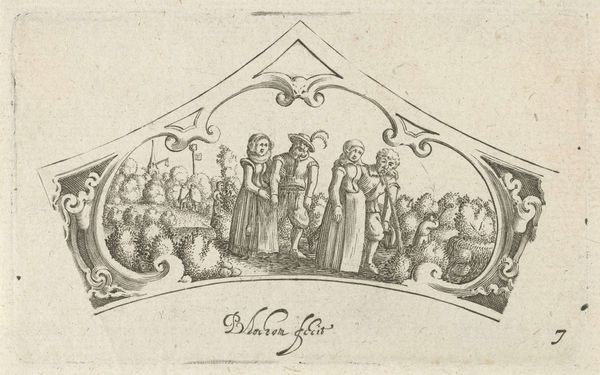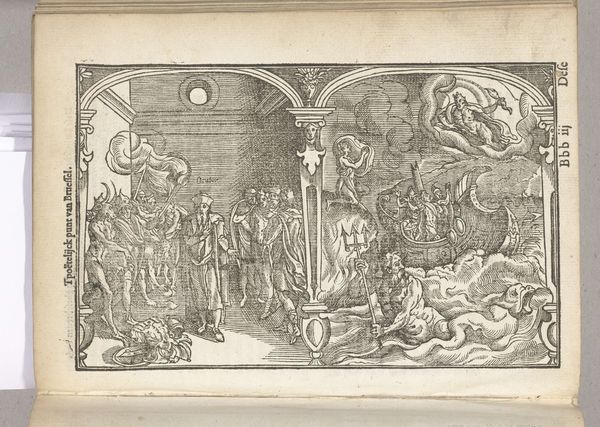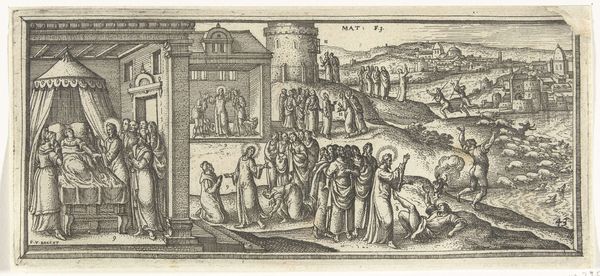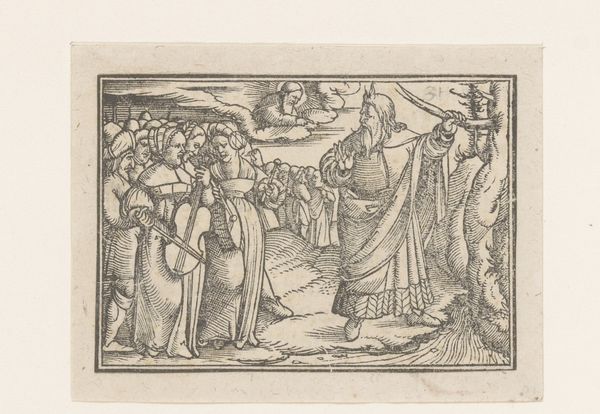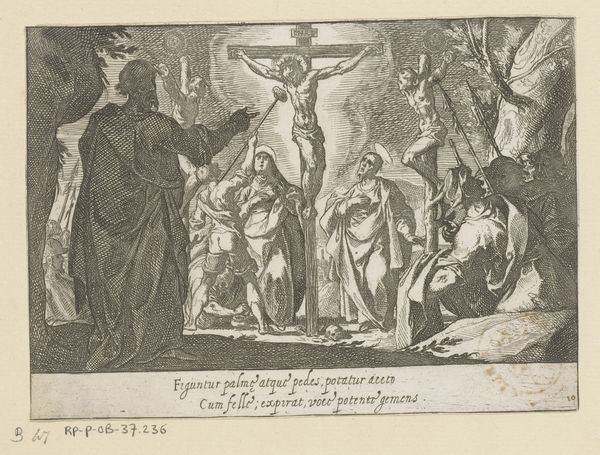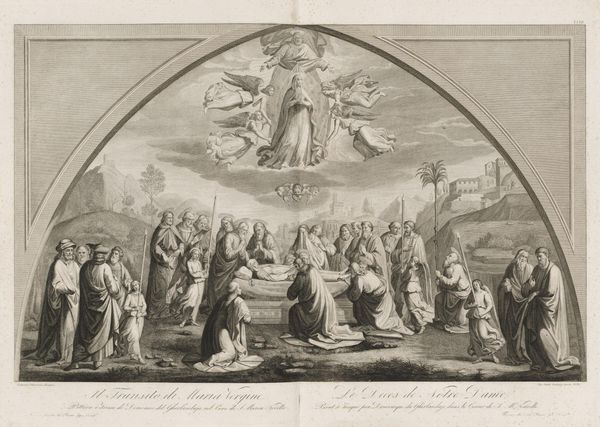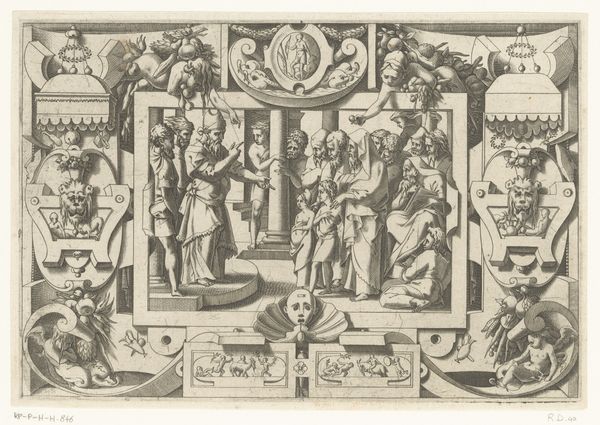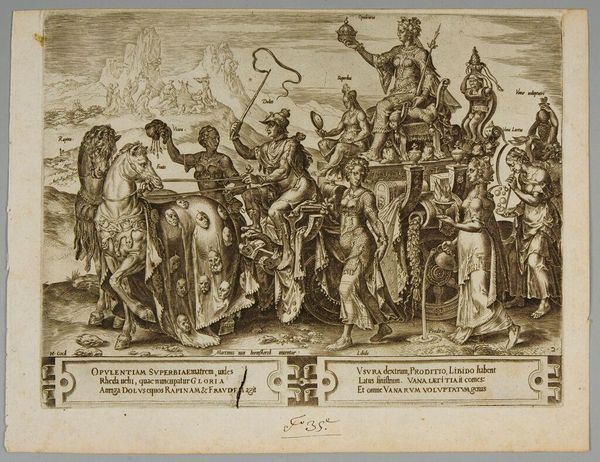
Portret van Adolf I, graaf van Nassau-Wiesbaden-Idstein, Margaretha van Hohenzollern-Neurenberg en hun kinderen in aanbidding voor Christus aan het kruis 18th century
0:00
0:00
print, engraving
#
portrait
#
medieval
# print
#
old engraving style
#
figuration
#
history-painting
#
engraving
Dimensions: height 203 mm, width 328 mm
Copyright: Rijks Museum: Open Domain
Curator: Before us, we have an 18th-century print titled "Portret van Adolf I, graaf van Nassau-Wiesbaden-Idstein, Margaretha van Hohenzollern-Neurenberg en hun kinderen in aanbidding voor Christus aan het kruis," attributed to Heinrich Hugo Coentgen. Editor: The overwhelming greyscale gives it a ghostly feel. It appears quite intricate and densely populated with figures. There's a definite sense of reverence conveyed by the scene's arrangement, despite its static composition. Curator: Yes, look at the clear delineation of the subjects, rendered through the meticulous process of engraving. Notice the repetitive, precise strokes building up tonal variation, the paper's evident aging – all of which point to its creation and consumption in a world valuing meticulous craftsmanship. The family is placed on a spiritual stage before Christ, and observe the symbolic weight implied by their material presentation through clothing and titles. Editor: The cross obviously is a powerful and pervasive symbol, one of ultimate sacrifice, flanked here by female figures, haloed, their gestures indicating mourning. But tell me more about how the Nassau family deployed their own imagery, what stories are retold or reinforced by the shields arrayed across the top edge of the image? It almost feels like the heraldry acts as a frame for their devotion. Curator: Certainly. The shields display the familial lines and inherited power of the House of Nassau, acting as visual cues for lineage. This intertwining of family identity with Christian piety underscores the era's aristocratic and religious framework. The symbolic landscape is entirely manufactured, curated and very controlled by its commissioners. Editor: Absolutely, and what about the audience who would view this? Consider that this was reproduced; each copy spread a certain message, embedding specific symbols of devotion within households or social circles, reinforcing a certain moral order. Even its age is material now. What do you feel is most impactful? Curator: For me, it is how process meets iconography in this singular print; the repetitive nature of engraving mirrors the ritualistic devotion of the family presented. It reminds us of the slow, deliberate labor inherent to faith. Editor: A striking intersection indeed. And reflecting on the endurance of such potent, resonant emblems, the enduring imagery in the art, for me that remains powerful. The echoes of these visual symbols resonate through history, influencing societal and personal ideals.
Comments
No comments
Be the first to comment and join the conversation on the ultimate creative platform.
